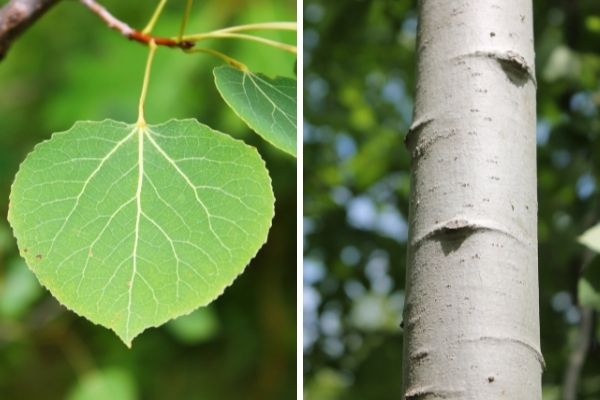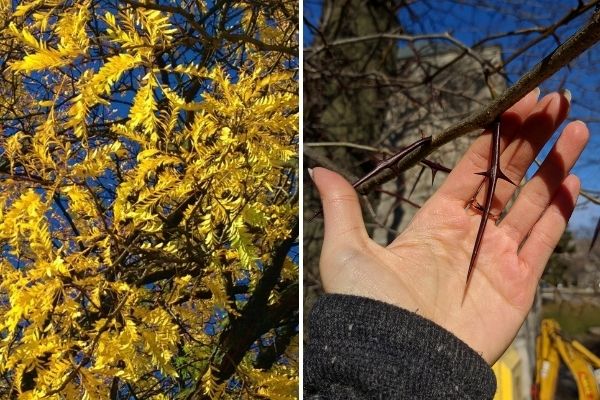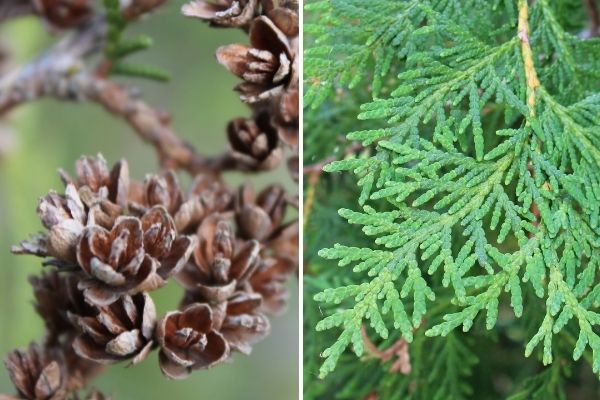While many people focus on memorizing the names of trees when practicing their identification skills, it is much more helpful to focus on describing the different characteristics of a tree. Understanding what makes a species stand out can help you identify and describe a wide range of species and learn how to compare them. Specifically, you should be looking out for 6 key tree features:
- Leaves: How big are the leaves? What colour are they? What is their shape? How are they arranged along the branch? Are they broad, needle-like or scale-like? Do they change colour and fall in the winter?
- Form: What is the general shape of the tree? Is the crown of the tree round or does it have a point? Do the branches reach horizontally, or do they curve upwards or downwards?
- Fruits and Seeds: How big are the fruits? What colour are they? Are they fleshy or are they encased in a cone or nut? When do the fruits emerge?
- Flowers: How big are the flowers? What colour are they? Do the flowers appear on their own or in clusters? Do certain pollinators visit these flowers? Do the flowers have a distinct smell?
- Bark: What colour is the bark? Does the bark have a distinct texture?
- Location: Where did you find this tree? What are the environmental conditions where it’s living? What other tree species are living next to it?
Here are three standout species we covered in our presentation:
1. Trembling aspen (populus tremuloides):

The trembling aspen got its common name from the way its heart-shaped leaves easily tremble at the slightest breeze. But why do they tremble? Because the leaf stem, also known as a petiole, is flat, unlike most deciduous trees, which have round leaf stems. This added flexibility allows the leaves to flutter more easily in the wind. This flexibility also means that both sides of the leaf are exposed to the sun, giving the trembling aspen the unique ability to photosynthesize on both sides of its leaf!
If that isn’t cool enough, the smooth, silvery-white bark of the trembling aspen is also able to photosynthesize, which is one of the reasons this species is able to do well during cold winters.
2. Honey locust (gleditsia triacanthos):

The most distinguishing feature of the honey locust is that it has thorns! These thorns can grow to more than 20cm in length and appear singular or in a branching pattern. Why on earth would a tree in Richmond Hill need such large thorns? There is a hypothesis that these thorns are an adaptation from the Pleistocene epoch (2.58 million years ago – 11.7 thousand years ago), where giant mammals roamed the land. We’re talking about mammoths, ground sloths and giant beavers the size of bears! It may be that the honey locust is holding onto its protective thorns in case any of these giant tree eaters return.
3. Eastern white cedar (thuja occidentalis):

This coniferous (cone-producing) tree species is easily identifiable by its flat, scale-like leaves. It is also known as arborvitae or “tree of life” since it was used to treat scurvy in French settlers. This name also reflects the many ways in which this tree supports local biodiversity, including squirrels and bird species that feed on its seeds, as well as white-tailed deer and other mammals that feed on the young saplings.
If you’re interested in learning more about the trees in the urban forest, check out our Events page for upcoming tree tours!
Brian Millward is the Acting Community Programs Manager at LEAF.
This virtual tree tour was supported by the City of Richmond Hill and Ontario Power Generation.
